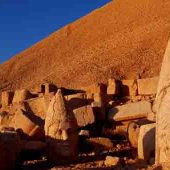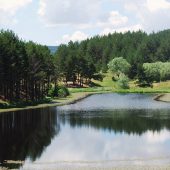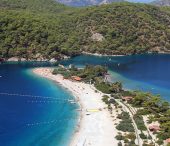Location: The mountain is 24km from Manisa.
Transportation: Manisa can easily be reached by private and public transport.
Highlights: The park is known for its historical and mythological points, as well as a wide variety of flora and fauna. Cavernous formations in the area have resulted in many canyons, caves and steep valleys. The main species of trees here include pine, juniper, poplar, walnut, elm and oak, 20 of which have been determined in scientific research as endangered. Also found in this area are the Manisa tulips, which gave their name to a period of the Ottoman Empire and were taken to Europe. Species of wildlife living in the park include bears, jackals, roe deer, foxes, badgers, wild goats, vultures and eagles, and there is also a pheasant production farm.
The park is rich in history with many myths attached to the location. According to one, the mountain was named after Cybele, the wife of god Cronos, and there is a relief of her carved into the rocks in Akpinar. But another account states that the mountain was named after Spilos, the daughter of Friesian king Menos, who had been kidnapped and was left at the mountain and brought up by wild animals. Tantalos, the king of Lydia, built a castle here and to celebrate he sacrificed his son to the gods, for which he was later punished.
The area known as Aglayan Kayalar (Crying Rock) was so called, according to mythology, because Niobe was crying for her 14 children killed by Leto. The caves in Dulkadin were once used as homes, and some of the remains of this period are exhibited in Manisa Museum. The structure of the area is suitable for mountaineering, climbing and trekking. Ataalani is a good place for camping.
Sulukle Lake, which is covered with leeches, is on the east of the park and 600m long. It has formed as a result of the lime base dissolving, and many caves developed because of the water eroding the base, the largest of which is Pasaini. The park is also well known for its hot spring, which is around 21°C.
Facilities: The area is apropriate for winter sports, and trekking throughout the year. In addition to camping areas in Ataalani, there are bungalows and restaurants.
Source: http://www.kulturturizm.gov.tr/










